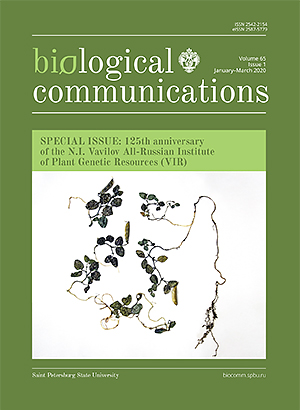The diversity of fatty acid composition in traditional and rare oil crops cultivated in Russia
DOI:
https://doi.org/10.21638/spbu03.2020.106Abstract
This review is devoted to the description of chemical peculiarities of industrial oil crops cultivated (or prospective for cultivation) in Russia, which are stored in the VIR collection. Different crops have similar fatty acids biosynthesis pathways, but each species has its own individualities in the chemical composition of the oil and its genetic control. The diversity of oil crop chemical composition opens the possibility of its multipurpose utilization practically in all industrial segments. Sunflower, rapeseed, flax, mustard, camelina and safflower are cultivated in Russia as oil crops. Castor beans, perilla, lallemantia and noog are not cultivated on an industrial scale, but have original oil properties and are prospective for future cultivation. Hemp and poppy seeds contain oil valuable for food, but they are not widespread. Cotton and peanut oils are prospective for industrial purposes when early, already created varieties of these crops will be cultivated in Russia. Oil properties depend on the ratio of its basic fatty acids: saturated (stearic, palmitic) and unsaturated (oleic, linoleic, linolenic). As a rule, lauric, myristic and palmitoleic acids are determined in minor quantities. The oil of Brassicaceae crops also includes arachidic, eicosenoic, eicosadienoic, behenic, erucic and lignoceric acids. Fatty acids accumulation is influenced by growing conditions, though it has strict genetic control.
Keywords:
oil crops, fatty acids, sunflower, linseed, rapeseed, safflower, mustard, castor bean, hemp, peanut
Downloads
References
Downloads
Published
How to Cite
License
Articles of Biological Communications are open access distributed under the terms of the License Agreement with Saint Petersburg State University, which permits to the authors unrestricted distribution and self-archiving free of charge.





